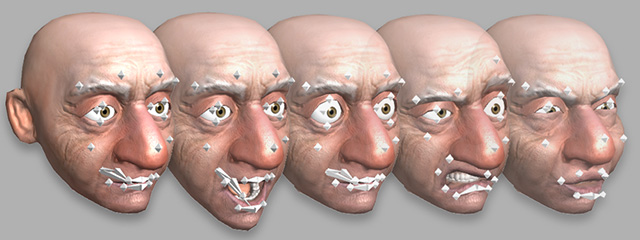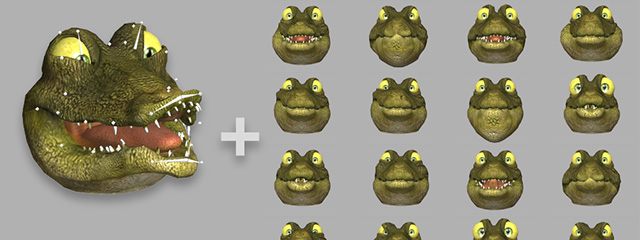Types of Facial Expressions
Generally speaking, there are three methods for producing 3D character's facial expressions: Bone-based, Morph-based and Hybrid-based(bone and morph). Character Creator accommodates all three types of facial rigs for editing standard character and conversion to Humanoid characters, so that the characters can have facial expressions in Character Creator and iClone.
In the Facial Profile Editor panel, you are free to use the tools to adjust bones, mesh or both to set the facial expressions and lip-syncs sliders.
Bone-based
You can create custom facial expressions or viseme simply by adjusting facial bones inside Character Creator. The setup can then be shared by characters using the same head bone system without repetitive mapping requirements.

|
|
The characteristics of this kind are:
|
Morph-based
Character Creator also supports morph-based facial animation data created in external 3D tools. You may create various morph targets to build natural and smooth facial expressions for characters. In Character Creator, you have the flexibility to import multiple OBJ or FBX files, with a full set of morph data and do further blend shapes to set your facial postures. You may also add morph data to your existing bone-based characters to create subtle facial behaviors.

|
|
The character has no facial bones except two bones for the eyes. However, the morphed model meshes generated by the original one are prepared already. |
|
The characteristics of this kind are:
|
Bone-morph-based
Not only can you work with bone-based and morph-based, but you can also create professional-grade facial animations by combining bone-skinned and blend-shaped animations together. The bone animation can maintain the main shape structure, and the morph data can give you all the personality flavor you need.

|
|
Some characteristics of these hybrid characters:
|



